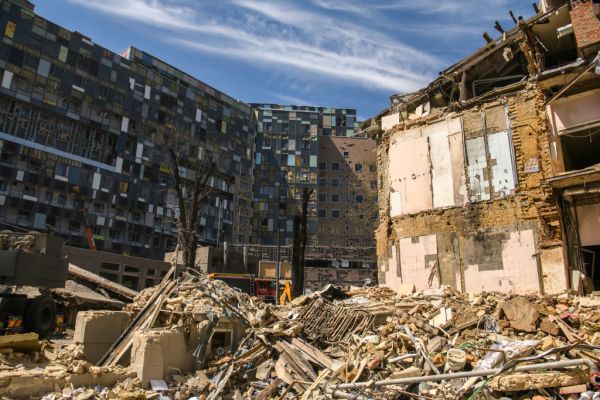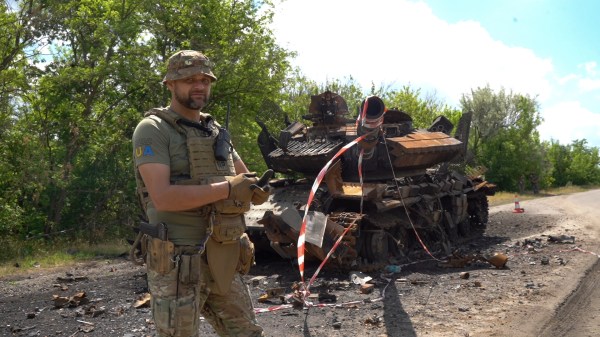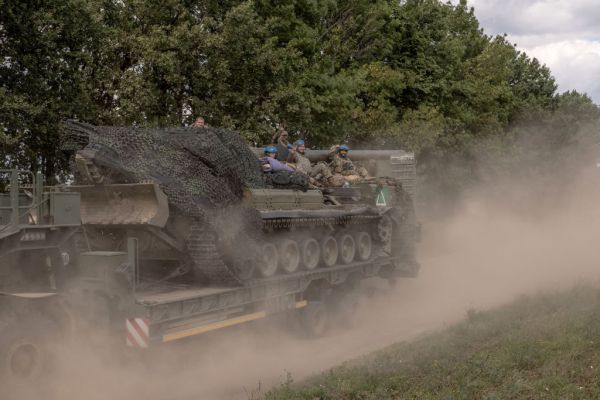KYIV—The surprise was complete, thanks to its meticulous planning. On August 6, despite facing significant challenges in the Donbas, where Russian forces have been steadily gaining ground, the Ukrainian army opened a new front, directly targeting the Kursk oblast—Russian Federation territory—for the first time since the war began in 2022.
This also marks the first time since World War II that a foreign army has launched an attack on Russian soil.
In just a few days of fighting, Ukrainian forces, comprising four of its best brigades with several thousand troops and hundreds of vehicles, reportedly captured territory equivalent to what Russia had conquered in Ukraine over the span of a year.
Ukraine, for its part, has imposed operational silence and managed to catch Russian President Vladimir Putin off-guard. The Russians have reportedly evacuated more than 76,000 people. Putin, meanwhile, is trying to downplay the significance of the incursion, which he called a “large-scale provocation.” On Friday he declared a “counterterrorism” operation in the three Ukrainian-bordering oblasts of Kursk, Belgorod, and Bryansk, and announced the deployment of reinforcements to counter the Ukrainian advance.
Most of the information we have received comes via Russian Telegram channels from military bloggers, who, without hiding their anger toward Putin’s regime, describe a significant Ukrainian breakthrough and a Russian army in disarray. One of the most influential pro-war bloggers, Rybar, who has more than 1 million followers on Telegram, wrote on Thursday: “Despite the attempts of the Russian forces to stop the advance of the Ukrainian mobile groups, the scale of the crisis is growing. ... Points of resistance of the Russian army are being cut off and bypassed along the rockade roads.”
However, these same sources have since tempered their discourse, claiming that the situation, despite some difficulties here and there, has been stabilized.
Ukraine’s allies, without whom it could not continue to defend itself, have unanimously supported the operation. “Washington hasn't changed its policy of allowing Ukraine to use American-supplied weapons “to target imminent threats just across the border,” said John Kirby, U.S. National Security Council spokesperson.
Ukraine’s objectives remain unclear.
At this stage, it remains difficult to gauge the full scope and objectives of the Ukrainian counteroffensive in Kursk oblast, though analysts suggest that Ukraine’s goals are both military and political, as well as an attempt to shift the initiative to their side.
Since the beginning of 2023, Russian forces have captured 740 square kilometers, including 150 square kilometers in Kharkiv oblast at the beginning of their counteroffensive in early May before stalling at the Ukrainian defense line.
However, despite being a slow grind, Russian forces in Donbas have been able to ramp up their offensive over the past month, capturing about 177 square kilometers of Donetsk oblast.
On Saturday, the Institute for the Study of War, an American think tank, noted that Ukrainian forces might occupy part of Sudzha, an important hub for gas transit to Europe that sits about six miles over the Ukraine border, and have advanced westward and northwestward in Kursk oblast. War Mapper, a group that relies on open-source intelligence (OSINT) for its analysis, announced that Ukraine could have seized 320 square kilometers of Kursk oblast.
Analyst and journalist Sebastien Gobert reported that this incursion may aim to seize the Kurchatov nuclear power plant and control key logistical routes in the region to undermine the Kharkiv front.
While these factors are worth considering, it is still too early to confirm them with certainty.
Touman, a Ukrainian battalion commander in the Sumy region who provided only his call sign as has been standard for Ukrainian soldiers, remained vague about the progress of Ukrainian troops but suggested that the primary objective might be to force the Russians to thin out their forces on the Donbas front, where Ukraine is facing challenges.
“Our strategy is to force the Russians to ease pressure on certain points of the front, particularly Toretsk [in Donetsk oblast],” Touman explained. “Perhaps also to capture a portion of Russian territory to negotiate in exchange for part of the territory captured by Russia.”
This hypothesis was confirmed by Ukrainian presidential adviser Mykhailo Podolyak, who said on August 7, “Any possible Ukrainian operations in ‘Russian border regions’ will have an impact on Russian society and improve Kyiv’s position in future peace talks with Moscow.”
Viktor Kevlyuk, a former Ukrainian army colonel and analyst at a defense and strategy center in Kyiv, argued that Ukraine’s objectives are more comprehensive than merely relieving pressure on the Donbas front.
In an interview with The Dispatch, the former officer explained that Ukraine's main military goals are to curb Russian attacks in the Kharkiv direction and weaken reserve forces. But most importantly, he stated, “The military-political goal is to show the world the weakness and internal unpreparedness of the Russian Federation to transfer the war to its sovereign territory.”
This analysis is echoed by international risk consultant Stéphane Audran, who views the operation as more political than military. In a note dated August 10, he wrote, “Seizing territory, bringing destruction to the aggressor, making its population flee before an invasion—this represents a significant political cost for the Kremlin.” He also emphasized that, besides boosting the morale of Ukrainian troops and civilians, it was crucial for Ukraine to restore a narrative of “victory” and shift the defeatist sentiment to the opposing camp.
Challenges ahead for the Ukrainian army.
Nevertheless, several analysts suggest that, given the political nature of the mission and the Ukrainian army's lack of manpower and ammunition, this operation may not be sustainable.
In an interview with The Dispatch, OSINT analyst Emil Kastehelmi of the Black Bird Group said, “It all depends on how much power Ukraine wants to commit to the Kursk offensive.”
Moreover, as the analysis points out, “Ukraine can't commit too many brigades to this, as they must simultaneously keep a strong reserve to respond to potential Russian threats elsewhere on the frontline.”
However, Ronin, a soldier from the Foreign Legion, while not denying the political impact of the operation, claims that the Ukrainians’ plan is to establish a long-term presence in the region.
“I can't reveal everything, but they’ve taken vehicles and materials meant for holding positions and maintaining a new front for the long term.”
Ronin asserts that Ukraine's ability to create a front in Kursk will depend on the speed of the Russian forces’ response. He also pointed out that much will depend on how quickly Ukrainian forces can use their artillery systems to strike at the Russian reinforcement columns.
"If the Ukrainians do their job well, it will create breaches in the front lines in Kursk while relieving pressure on the eastern and southern fronts."
Thus, while it is still difficult to predict the operational success of Ukraine and its ability to sustain such an effort in the long term, the offensive is seen in Ukraine as a form of resurgence against the Russian advance in the Donbas and a massive blow to the security apparatus of Russian territory, as well as a failure of its secret service.
According to Konrad Muzyka, a military analyst at the Polish think tank Rochan Consulting, the operation can be considered successful only if it reduces Russian attacks in the Donetsk region, creates strategic dilemmas for Moscow, allows Kyiv to maintain a presence in Kursk oblast, and strengthens Ukraine’s position in future negotiations. Conversely, it would be deemed a failure if Ukrainian troops are driven out of Russian territory while suffering heavy losses without achieving tangible results, allowing Russian forces to continue their advance in the Donbas.
Touman, on the other hand, suggests that this could be a turning point in the war.
“The Kremlin is weakened, their army is occupied along the entire front line,” he insisted. “Sometimes all it takes is one event to regain the advantage.”






Please note that we at The Dispatch hold ourselves, our work, and our commenters to a higher standard than other places on the internet. We welcome comments that foster genuine debate or discussion—including comments critical of us or our work—but responses that include ad hominem attacks on fellow Dispatch members or are intended to stoke fear and anger may be moderated.
With your membership, you only have the ability to comment on The Morning Dispatch articles. Consider upgrading to join the conversation everywhere.